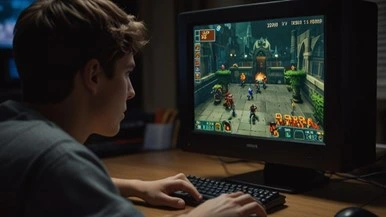
Think about a player who is trying to make that brave jump over a chasm in the video game and finds that the jump mechanic is glitchy or does not respond. These are experiences that can wreck gameplay and emotions, hence the critical role of functional testing. Functional testing is an essential step in game quality assurance and focuses on verifying that a game’s mechanics, controls, and logic work as anticipated to engineer an immersive and frustration-free experience.
In this blog, we will explain the importance of functional testing in games, notice some common issues that functional testing addresses, and show best practices for effective testing to make every player’s interaction smooth and natural.
The Problem: Bugs That Disrupt Gameplay
When players encounter bugs in basic mechanics — think jumping, sprinting, or object interaction — the illusion is broken. Problems of this sort arise due to complex game logic that has not been tested as it should have been. Characters acting in an incoherent way, controls not acting the way they should, and interaction with environments not happening the way it is supposed to all hurt the experience. Functional testing is often crucial in finding and resolving such perils that might otherwise disrupt gameplay. By performing functional testing, you avoid problems with player experience, like broken controls and inconsistent AI behavior to quest errors, preventing technical mishaps from diminishing the quality of gameplay.
Controls and mechanics probably are the most standard places where functional testing has its impact. Slow response times, unintentional limitations in movement, or any failure in responsiveness of control can seriously affect gameplay. In addition, functional testing is necessary in confirming that quests and objectives trigger properly to support a proper storyline flow. Enemy AI is another area that benefits greatly from functional testing, as unpredictable behavior can make games unfairly difficult or lead to repetitive encounters that dull gameplay. Through functional testing, AI is verified to perform within designed gameplay parameters, contributing to a balanced player experience.
Solution: Best Practices in Functional Testing

To make sure functional testing fits into seamless gameplay, there are a few best practices it should follow. Structured test cases and scenarios allow the functional testers to mirror actual gameplay, covering every potential outcome a player may go through. This makes sure that mechanics perform well across multiple scenarios.
Other methodologies within functional testing include playthroughs, persistence testing, and playtests. Playthroughs work by simulating different player types and testing the game from start to finish in order to ensure that the mechanics, progression, and narrative all function as intended. Persistence testing involves unlocking every collectible, trophy, or achievement in existence to make sure those systems work perfectly. Most specifically, playtesting with multiplayer or co-op modes involves rotations through all maps, modes, and scenarios to make sure everything works together in the game under all configurations.
Regression testing, in games QA, means retesting bugs fixed in newer versions of a game. That means verifying that certain issues found previously have, in fact, been fixed and that no new problems have shown up in related areas. To avoid confusion, when testing to catch feature regressions (often referred to as Feature Sweep in Games QA), testers re-test core features to ensure that nothing is broken in the old functionality. In terms of maintaining stability and consistency across versions, both types of testing are quite important.
Where exploratory testing is often attached to breaking the game or finding an unintended behavior, it should actually be used to supplement functional testing. Exploratory methods can find issues that may not be revealed in structured test cases, such as edge cases, or scenarios outside typical player behavior. However, functional testing primarily relies on structured methodologies to verify intended behavior and ensure mechanics work as designed.
Automation can help with this. Automated functional testing can accelerate repetitive checks, freeing human testers to dig in on more complex gameplay mechanics. Every automation scenario is not quite possible, but it does have great roles in the verification of repeated interactions and input latency, particularly on multiple devices. This becomes functional testing, which would facilitate a much better player experience.
Result: Enhanced Player Experience Through Functional Testing
Through functional testing, video game developers are able to provide experiences that players enjoy without technical frustrations. This is the consistency and reliability that comes from functional testing in the mechanics and controls of the game, the ability of a player to fully dive into the world of the game. This improves player satisfaction and helps in retention, helping make sure that from start to finish, players go through a smooth, uninterrupted experience.
At GlobalStep, comprehensive functional testing is one of our strong suits, going well beyond surface-level checks to find those issues that really disrupt the player experience. With seasoned testers who understand game mechanic intricacies and have a proven track record in game lifecycle development, we support developers in crafting games that players love. Our integrated QA approach, from functional testing to localization QA and advanced testing techniques, ensures your game will deliver quality experiences through all stages of development. To learn more about these QA solutions offered by us-including insights into our unique localization integration and professional approach towards functional testing-check out GlobalStep’s QA Services and Localization QA page.





